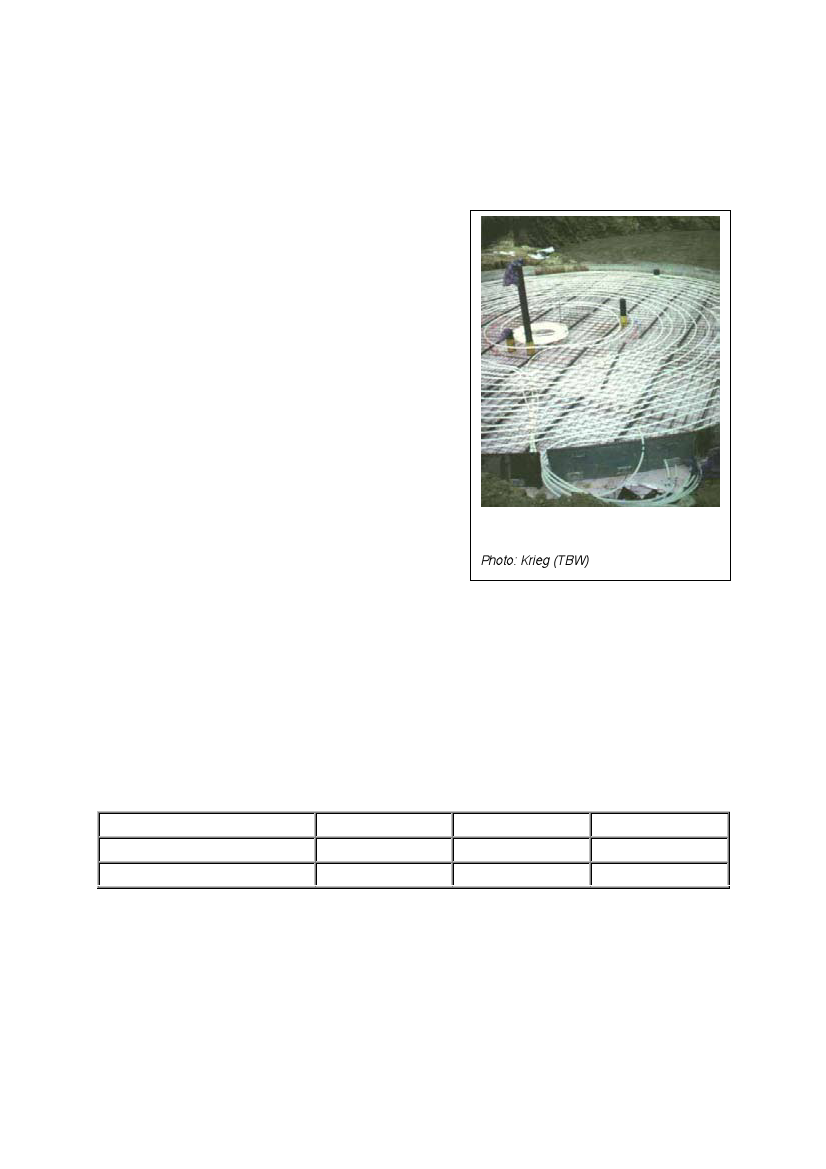
Heating
To achieve the optimum biogas yield, the anaerobic digestion needs constant environmental
conditions, preferably close to the process optimum. The digester temperature is of prime
importance. In temperate areas, a heating system and an insulation of the digester is
necessary. Hence, the needed temperature for digestion can be reached and a loss of
energy by transmission is compensated.
Because of the high costs for material and
installation of a heating system, a low-cost biogas
plant, as needed in developing countries, can only
be build without heating. To boost the biogas yield
for those plants, the building of a bigger digester to
increase the retention time would be cheaper. A
bigger digester reduces the required maintenance,
while a heating system, increases maintenance
requirements. A bigger digester serves also as a
buffer for sediments, pH-variations and gas storage.
For example, a fixed dome plant sized 50% bigger,
is only 10% more expensive.
The mean surrounding temperature and it’s
seasonal variations are very important. Biogas
plants without heating system work, therefore, only
in warmer regions for the whole year. In regions with
extreme temperature variations, for instance in
Turkey (hot summer, cold winter), the biogas plant
should be built under the stable. Hence the biogas
yield would be lower in summer, but constant over
the year and at the end higher. Before
implementation, at least an approximated average
temperature profile and expected extremes over the
year should be available for the site.
Figure 31: Heating system for a
biodigester under construction
(Germany)
Photo: Krieg (TBW)
A biogas plant with heating system and co-generation can be operated with process energy.
Nevertheless the dimensioning of such a heating system is difficult, as the substrate, which
has to be heated up, is not homogenous.
A guiding figure for a digester with a hydraulic retention time of 20 days is 270 W/m3 digester
volume. The increasing of the hydraulic retention time makes it possible to reduce the
heating power per volume. With a hydraulic retention time of 40 days the digester needs only
150 W/m3.
Following figures are for heating systems with a heating water temperature difference of 20
K:
hydr. retention time
40 days
30 days
20 days
temperature difference
heating power
20 K
150 kW/m3
20 K
210 kW/m3
20 K
270 kW/m3
A heating system located in the digester produces a thermal circulation, which is, especially
for non-agitated digesters, very important.
An indirect energy transfer by heat exchanger is most common. Exceptions are steam
injection, liquefying of solid manure with heated water and the heating by pre-aeration.
Internal and external heating systems
External heating systems have a forced flow on both sides. Due to the turbulent flow patterns
of both media, a very good heat transportation can be reached. Therefore, the surface of the
heat exchanger can be comparatively small. Nevertheless those systems cannot be
recommended for non-agitated digesters.
53